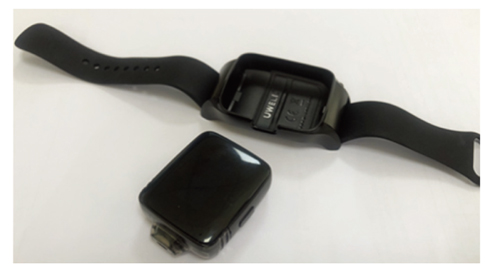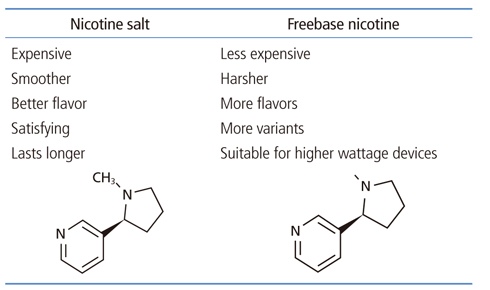J Korean Med Assoc.
2020 Feb;63(2):88-95. 10.5124/jkma.2020.63.2.88.
Evolution of tobacco products
- Affiliations
-
- 1National Tobacco Control Center, Korea Health Promotion Institute, Seoul, Korea. sklee@khealth.or.kr
- 2Southern Gyeonggi-do Regional Smoking Cessation Center, Hallym University, Anyang, Korea.
- KMID: 2470063
- DOI: http://doi.org/10.5124/jkma.2020.63.2.88
Abstract
- Tobacco products are rapidly evolving. Since the World Health Organization Framework Convention on Tobacco Control came to effect in 2005, the parties of the treaty have been aiming to control tobacco use. Moreover, the social norm of smoking has changed. These changes have prompted the tobacco industry to evolve their products and business model. There have been several evolutions in tobacco products. Firstly, new tobacco products, such as electronic cigarettes and heated tobacco products were introduced into markets that were previously dominated by conventional cigarettes. Thus, smokers are able to select alternative tobacco products. Secondly, new devices for tobacco use, including universal serial bus, smart watch, and car key devices, have been developed and released. These devices are popular among females and youth, who wish to hide their smoking behavior. Thirdly, nicotine, which is used in tobacco products, has also evolved. Typically, "˜free-base nicotine' has been the main form used in tobacco products, because it helps to deliver nicotine quickly to the smoker's brain. However, a new form of nicotine, "˜nicotine salt', is used in electronic cigarettes. It can deliver a more highly concentrated dose of nicotine to the smoker's brain. To regulate these evolving products, laws are required to prevent the easy access of new tobacco products in the Korean market and therefore, a new organization for monitoring the evolution of tobacco products is required. Additionally, we need to encourage young people and scholars to develop interest in tobacco product control, thus ensuring adequate regulation of new tobacco products.
MeSH Terms
Figure
Reference
-
1. National Center for Chronic Disease Prevention. Health Promotion Office on Smoking and Health. The health consequences of smoking—50 years of progress: a report of the surgeon general. Atlanta: Centers for Disease Control and Prevention;2014.2. World Health Organization. WHO report on the global tobacco epidemic, 2011: warning about the dangers of tobaccot. Geneva: World Health Organization;2011.3. Jung KJ, Yun YD, Baek SJ, Jee SH, Kim IS. Smoking-attributable mortality among Korean adults, 2012. J Korea Soc Health Inform Health Stat. 2013; 38:36–48.4. Lee S, Grana RA, Glantz SA. Electronic cigarette use among Korean adolescents: a cross-sectional study of market penetration, dual use, and relationship to quit attempts and former smoking. J Adolesc Health. 2014; 54:684–690.
Article5. Park JH. CEO of PMK Chung, "iQOS proposes innovative tomorrow without tobacco smoke". NEWSIS. 2017. 05. 17. cited 2018 Apr 9. Available from: http://www.newsis.com/view/?id=NISX20170517_0014900643&cID=10402&pID=13000.6. Lee J, Lee S. Korean-made heated tobacco product, 'lil'. Tob Control. 2019; 28(e2):e156–e157.
Article7. Lee S, Kim JH, Kim IS. Tobacco litigation and transnational tobacco companies' componential analysis of South Korea's tobacco brands. Health Soc Welf Rev. 2012; 32:461–484.
Article8. Kim J, Lee S. Using focus group interviews to analyze the behavior of users of new types of tobacco products. J Prev Med Public Health. 2017; 50:336–346.
Article9. Kim J, Lee S. Daily cigarette consumption and urine cotinine level between dual users of electronic and conventional ciga-rettes, and cigarette-only users. J Psychoactive Drugs. 2019; 12. 26. [Epub]. DOI: 10.1080/02791072.2019.1706791.
Article
- Full Text Links
- Actions
-
Cited
- CITED
-
- Close
- Share
- Similar articles
-
- The necessity of introducing plain packaging of tobacco products in Korea
- Controlled trial of transdermal nicotine patch in tobacco withdrawal
- The Impact of Heated Tobacco Products on Smoking Cessation, Tobacco Use, and Tobacco Sales in South Korea
- Issues of new types of tobacco (e-cigarette and heat-not-burn tobacco): from the perspective of ‘tobacco harm reduction’
- International regulatory overview of electronic cigarettes and heated tobacco products




